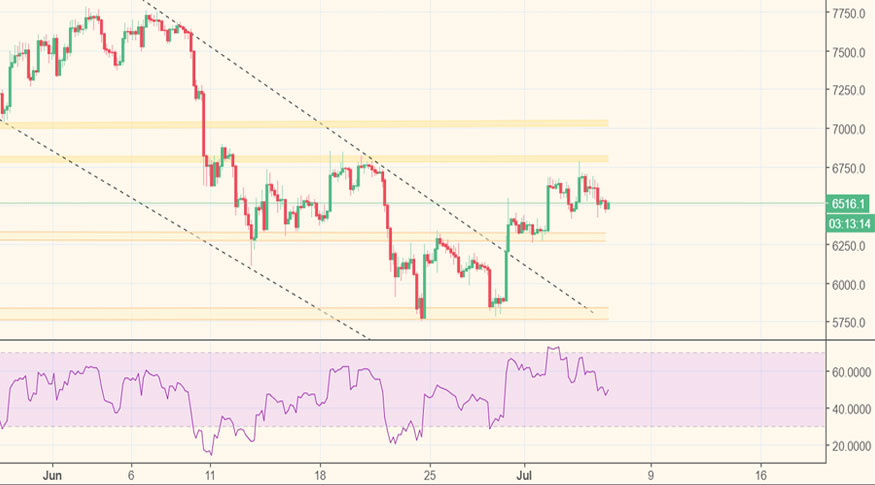Assessing And Mitigating Flood Risks For Livestock

Table of Contents
Assessing Flood Risk on Your Farm
Before implementing any mitigation strategies, a thorough assessment of your farm's flood risk is paramount. This involves identifying vulnerable areas, evaluating livestock susceptibility, and understanding flood severity and frequency.
Identifying Flood-Prone Areas
Pinpointing areas on your farm most susceptible to flooding is the first step in effective mitigating flood damage to livestock. Several methods can help:
- Analyze historical flood events: Examine past flood records to identify areas frequently affected. Local government agencies and historical weather data often provide this information.
- Use online flood risk maps: Many websites and government agencies offer online tools displaying flood risk zones. These maps use elevation data and hydrological modeling to predict flood probabilities.
- Conduct a site survey: Walk your property, noting low-lying areas, drainage patterns, and potential pathways for floodwater. Consider the proximity to rivers, streams, and other water bodies.
- Consider rainfall patterns and soil types: Heavily saturated soils and high rainfall areas are more prone to flooding, increasing your livestock's vulnerability.
- Consult with local agricultural extension services: Experts can provide valuable insights and data specific to your region and soil type. They can often assist with site-specific flood risk analysis. Utilizing Geographic Information Systems (GIS) can provide highly detailed and precise flood risk assessments.
Evaluating Livestock Vulnerability
Different livestock types exhibit varying vulnerabilities to flooding. Understanding these differences is critical for effective flood risk assessment for livestock.
- Identify vulnerable livestock groups: Young animals, pregnant females, and those with pre-existing health conditions are particularly susceptible to flood-related stress, hypothermia, and disease.
- Consider mobility limitations: Animals with limited mobility, such as newborn calves or older animals, may struggle to escape rising floodwaters.
- Assess the availability of safe evacuation routes: Ensure you have clear, easily accessible routes for moving your livestock to higher ground during a flood.
- Evaluate the health and age of your herd: Older or sick animals may require additional care and attention during a flood.
Understanding Flood Severity and Frequency
Determining the likelihood and severity of floods in your area is crucial for developing appropriate mitigation strategies.
- Use historical flood data: Local meteorological agencies and government organizations often maintain detailed flood records indicating frequency and severity.
- Consult with hydrological experts: Hydrologists can provide detailed analysis of your local watershed and assess the probability of future flood events.
- Understand probability of flooding: Flood return periods (e.g., 100-year flood) provide an estimate of the probability of a flood of a certain magnitude occurring within a given timeframe.
- Consider climate change impacts: Climate change is increasing the frequency and intensity of extreme weather events, including floods, making accurate assessments more vital than ever.
Mitigation Strategies for Livestock Flood Risk
Implementing effective mitigation strategies is essential to minimize the impact of floods on your livestock. These strategies can be categorized into pre-flood preparations, structural measures, and early warning systems.
Pre-Flood Preparations
Proactive planning is crucial for protecting your livestock before a flood occurs.
- Develop a detailed evacuation plan: Identify escape routes, temporary shelters, and designated assembly points.
- Establish designated safe zones: These should be elevated areas on your farm, ideally with sufficient space and resources for your animals.
- Stockpile emergency supplies: Maintain an easily accessible supply of feed, water, medications, and other essentials for your livestock and yourself.
- Identify alternative water sources: If your primary water supply is at risk, secure alternative sources for both livestock and human consumption.
- Secure necessary veterinary supplies: Have a well-stocked emergency kit including medications and equipment for treating flood-related injuries and illnesses.
Structural Mitigation Measures
Investing in structural improvements can significantly reduce flood damage.
- Build elevated pastures: Elevating pastures reduces the risk of flooding and allows for better drainage.
- Create flood barriers: Construct barriers around vulnerable areas to divert floodwaters.
- Improve drainage infrastructure: Install efficient drainage systems to divert water away from your buildings and pastures.
- Construct elevated shelters: Build elevated shelters to protect livestock during floods.
- Reinforce existing structures: Strengthen existing buildings and fences to withstand the force of floodwaters.
Early Warning Systems and Monitoring
Implementing an effective early warning system is vital for timely action.
- Subscribe to weather alerts: Sign up for weather alerts and flood warnings from your local meteorological agency.
- Install water level monitors: Use water level monitors to track water levels in nearby rivers and streams.
- Monitor soil saturation levels: Regularly check soil moisture levels to assess the risk of flooding.
- Establish communication systems: Maintain reliable communication systems to stay informed during emergencies.
- Develop early warning signals: Create a clear system of signals to alert you to impending floods and initiate evacuation procedures.
Post-Flood Recovery and Management
After a flood, prompt action is crucial to minimize losses and prevent disease outbreaks.
- Implement post-flood rescue plans: Quickly and safely rescue your animals from flooded areas.
- Assess livestock health and provide necessary care: Check for injuries, hypothermia, and other health issues; seek veterinary assistance as needed.
- Disinfect barns and pastures: Thoroughly clean and disinfect all affected areas to prevent the spread of disease.
- Dispose of contaminated materials: Properly dispose of contaminated feed, bedding, and other materials to prevent disease transmission.
- Seek veterinary assistance: Consult with a veterinarian for advice on disease prevention, animal care, and any necessary treatment.
- Contact your insurance provider: Report the flood damage to your insurance company and follow their procedures for filing a claim.
Conclusion: Proactive Planning is Key to Successful Livestock Flood Risk Management
Successfully assessing and mitigating flood risks for livestock requires a multi-faceted approach. By implementing the strategies outlined in this guide – from assessing your farm's vulnerability and developing pre-flood preparations to establishing early warning systems and post-flood recovery plans – you can significantly reduce the impact of floods on your livestock operation. Don't wait for a flood to strike; begin assessing and mitigating flood risks for livestock on your farm today. Utilize the strategies outlined in this guide to build a more resilient and secure future for your livestock operation.

Featured Posts
-
 Christophe Mali Tete D Affiche Du Concert De Cloture A Onet Le Chateau
May 07, 2025
Christophe Mali Tete D Affiche Du Concert De Cloture A Onet Le Chateau
May 07, 2025 -
 Rihannas Pregnancy Announcement Baby 3 On The Way
May 07, 2025
Rihannas Pregnancy Announcement Baby 3 On The Way
May 07, 2025 -
 Report Trouble Brewing In George Pickens Steelers Contract Negotiations
May 07, 2025
Report Trouble Brewing In George Pickens Steelers Contract Negotiations
May 07, 2025 -
 A List Stars Dazzle At The Met Gala Red Carpet
May 07, 2025
A List Stars Dazzle At The Met Gala Red Carpet
May 07, 2025 -
 The Karate Kids Enduring Legacy How Cobra Kai Maintains Continuity
May 07, 2025
The Karate Kids Enduring Legacy How Cobra Kai Maintains Continuity
May 07, 2025
Latest Posts
-
 Ethereum Forecast Rising Accumulation Signals Potential Price Increase
May 08, 2025
Ethereum Forecast Rising Accumulation Signals Potential Price Increase
May 08, 2025 -
 Ethereum Price Prediction Significant Eth Accumulation Fuels Bullish Sentiment
May 08, 2025
Ethereum Price Prediction Significant Eth Accumulation Fuels Bullish Sentiment
May 08, 2025 -
 Ethereums Growing Momentum 10 Increase In Address Activity Signals Bullish Trend
May 08, 2025
Ethereums Growing Momentum 10 Increase In Address Activity Signals Bullish Trend
May 08, 2025 -
 Ethereum Price Forecast 1 11 Million Eth Accumulated Bullish Momentum Builds
May 08, 2025
Ethereum Price Forecast 1 11 Million Eth Accumulated Bullish Momentum Builds
May 08, 2025 -
 Ethereum Transaction Volume Spikes Analysis Of Recent Network Activity
May 08, 2025
Ethereum Transaction Volume Spikes Analysis Of Recent Network Activity
May 08, 2025
